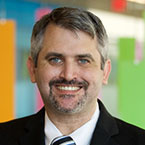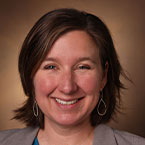Which Of These Can Be Used To Treat Candidiasis
By: Scott Pangonis, MD, MS, FAAP & S. Elizabeth Williams, MD, MPH, FAAP
Candida is a type of yeast, function of the fungus family that ordinarily lives in and on our bodies. Information technology tin can be found on the skin and in the mouth, for case, and in the intestinal tract and genital area. Almost of the time, Candida does non cause any problems. However, when it overgrows, information technology can cause infections such every bit candidiasis. These fungal infections can get chronic.
What is thrush?
Candidiasis infection of the mouth, too called oral thrush, is common in infants and toddlers. Thrush tin as well bear on fingernails, eyes, and pare folds of the neck and armpits, likewise equally the diaper area, including the vagina and folds of the groin.
How do infants and children get thrush and other Candida infections?
Pregnancy & birth. Newborns tin can get a Candida infection from their mothers. This can happen while they're still in the uterus, merely also during passage through the vagina during birth. Most of these infections are caused past Candida albicans, although other species of Candida are becoming more common.
Medicine. Sometimes, children develop candidiasis after taking antibiotics. While antibiotics fight germs that brand a kid sick, they sometimes too affect the "expert" leaner that help keep the body's residue of microbes in bank check. This gives fungi like Candida a take chances to overgrow. Using inhaled steroids for asthma without rinsing the mouth with water after inhaler use can too lead to candidiasis.
Wellness atmospheric condition. In some children with serious health challenges, the fungus may enter the bloodstream. Those well-nigh hazard of bloodstream infections with Candida include premature or very depression birthweight infants, children with long-term intravenous (4) catheters, and children with weakened allowed systems caused past cancers or medicines. For these children, oral nystatin and fluconazole are oftentimes used to prevent candidiasis.
If Candida infections become chronic or occur in the rima oris of older children, it may be a sign of an immune arrangement challenge, such as human immunodeficiency virus (HIV) infection. Candida infections of the peel, oral fissure (thrush), or vagina in children over 2-3 years of age, can besides exist a sign of diabetes.
How to assist prevent Candida infectionsHither are some ways to help reduce the risk of candidiasis in children:
|
|---|
Signs & symptoms of Candida infections
Infants. In infants, symptoms include painful white or yellow patches on the tongue, lips, gums, palate (roof of oral cavity), and inner cheeks (thrush). It tin can also spread into the esophagus, making it painful to swallow. Candidiasis can make a diaper rash worse, producing redness and sensitivity in the affected area, along with a raised blood-red edge in some cases.
Teens. Teenage girls who develop a vaginal yeast infection may have symptoms such as itching, pain, redness, and/or a thick, "cheesy" vaginal belch. A yeast infection often follows antibody therapy.
Children taking IV medications. Symptoms are different for children who get Candida infections while receiving chemotherapy treatment, or other long-term dwelling house medications delivered through an Iv catheter. In these cases, the mucus gets into the claret system. Once in the claret, the yeast tin can travel throughout the body, causing infection of the heart, lungs, liver, kidneys, eyes, encephalon, and peel. The early signs of a Candida bloodstream infection are fever and blockage of the IV catheter.
How is a Candida infection diagnosed?
Your pediatrician will often make the diagnosis by examining your kid and reviewing symptoms. Scrapings of Candida lesions (sores) inside the oral cavity or other spots can exist further examined for signs of the infection.
An ultrasound or CT browse can detect candidal lesions that have developed in the brain, kidney, heart, liver, or spleen after a bloodstream infection. Cultures of the blood or mouth lesions are sometimes taken to grow the fungus in the laboratory and identify the type and sensitivity of the yeast.
Treatment for Candida infections
Antifungal drugs are used to treat candidiasis. The antibody nystatin is frequently prescribed for children with infections such as oral thrush or a Candida-related diaper rash, for example. The specific medicines given for candidiasis vary, depending on the part of the trunk where the infection is concentrated.
If candidiasis has spread through the bloodstream, your pediatrician will unremarkably recommend treatment with an IV medicine. Some of these IV medicines cause uncomfortable side effects, but are still reliable medicine for serious, invasive fungal infections. Nonetheless, most medications used to treat candidiasis are well tolerated by most children.
How long does it have for Candida infections go away?
Once treatment starts, nigh candidiasis infections get ameliorate inside about two weeks. Information technology is non uncommon for infections to return, notwithstanding. Long-lasting thrush is sometimes related to pacifiers or bottles that take not been properly boiled to remove the mucus.
The infection is much more difficult to treat in children with catheters or weakened immune systems. Typically, the catheter must be removed or replaced to effectively care for infections that are from with these devices. Tests are as well usually done to run across if the infection has spread to other parts of the trunk. Antifungal therapy can have weeks to months for the more than challenging infections.
Remember
Talk with your pediatrician if you think your child may take symptoms of Candida infection, or whenever you have whatsoever questions almost your child's health.
More information
- Symptom Checker: Thrush
- Yeast Infections in Girls and Immature Women
About Dr. Pangonis
 Scott Pangonis, Doctor, MS, FAAP is a board-certified pediatrician. He is an Assistant Professor in Pediatric Infectious Diseases at Akron Children's Medical Middle. Inside the American Academy of Pediatrics, he is a member of the Section on Infectious Diseases.
Scott Pangonis, Doctor, MS, FAAP is a board-certified pediatrician. He is an Assistant Professor in Pediatric Infectious Diseases at Akron Children's Medical Middle. Inside the American Academy of Pediatrics, he is a member of the Section on Infectious Diseases.
Virtually Dr. Williams
 South. Elizabeth Williams Md, MPH, FAAP, is a board-certified pediatrician who is currently an Assistant Professor of Full general Pediatrics at Tennessee at Monroe Carrell Jr. Children's Hospital in Nashville. Within the American Academy of Pediatrics, Dr. Williams serves on the Didactics Subcommittee of the Section on Infectious Diseases.
South. Elizabeth Williams Md, MPH, FAAP, is a board-certified pediatrician who is currently an Assistant Professor of Full general Pediatrics at Tennessee at Monroe Carrell Jr. Children's Hospital in Nashville. Within the American Academy of Pediatrics, Dr. Williams serves on the Didactics Subcommittee of the Section on Infectious Diseases.
The data contained on this Web site should non be used as a substitute for the medical care and communication of your pediatrician. There may be variations in handling that your pediatrician may recommend based on individual facts and circumstances.
Which Of These Can Be Used To Treat Candidiasis,
Source: https://www.healthychildren.org/English/health-issues/conditions/infections/Pages/Thrush-and-Other-Candida-Infections.aspx
Posted by: robinsonweir1970.blogspot.com


0 Response to "Which Of These Can Be Used To Treat Candidiasis"
Post a Comment